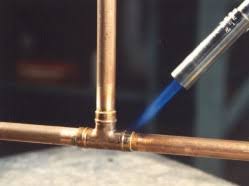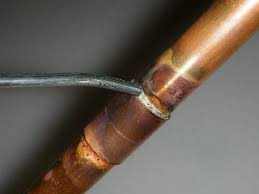Solder Ring And End Feed - What Is The Difference?
Solder Ring and End Feed - What is the Difference?
Both of these types of fittings use molten solder to make a joint between a copper pipe and a copper (or occasionally brass) fitting. But the key difference is that with end feed fittings, the installer has to provide the solder. Solder ring fittings, as the name suggests, provide their own solder!
Solder Ring Fittings
Solder ring fittings, or Yorkshire as they are sometimes referred to, have an integral solder ring already applied to the neck of the fitting in solid form. When the joint is heated and flux is applied, the solder melts and runs around the joint by capillary action. As the heat is taken away the solder solidifies and the joint is made.

End Feed Fittings
End feed works in exactly the same way, all except that end feed fittings do not have the integral solder ring. As the joint is heated, solder from a reel is offered up to the joint when it reaches the ideal working temperature. Once again the solder is drawn into the joint in exactly the same way, solidifying as the joint cools and sealing the pipework.
End feed is the system often preferred by plumbers as the cost of the fitting is a fair bit lower. It does take a higher degree of skill, as the solder will only run when the joint is at the ideal temperature - this comes with practice.

Some plumbers use solder ring fittings, some also add additional solder to the joint. This doesn't hurt provided not too much is added, and actually there is a logic to it as over the years many manufacturers have cut down on the amount of solder that is put into a solder ring joint at the factory to save cost.
Both types of joint are tried and tested - how good the final joint is will always come down the skill level of the installer.

